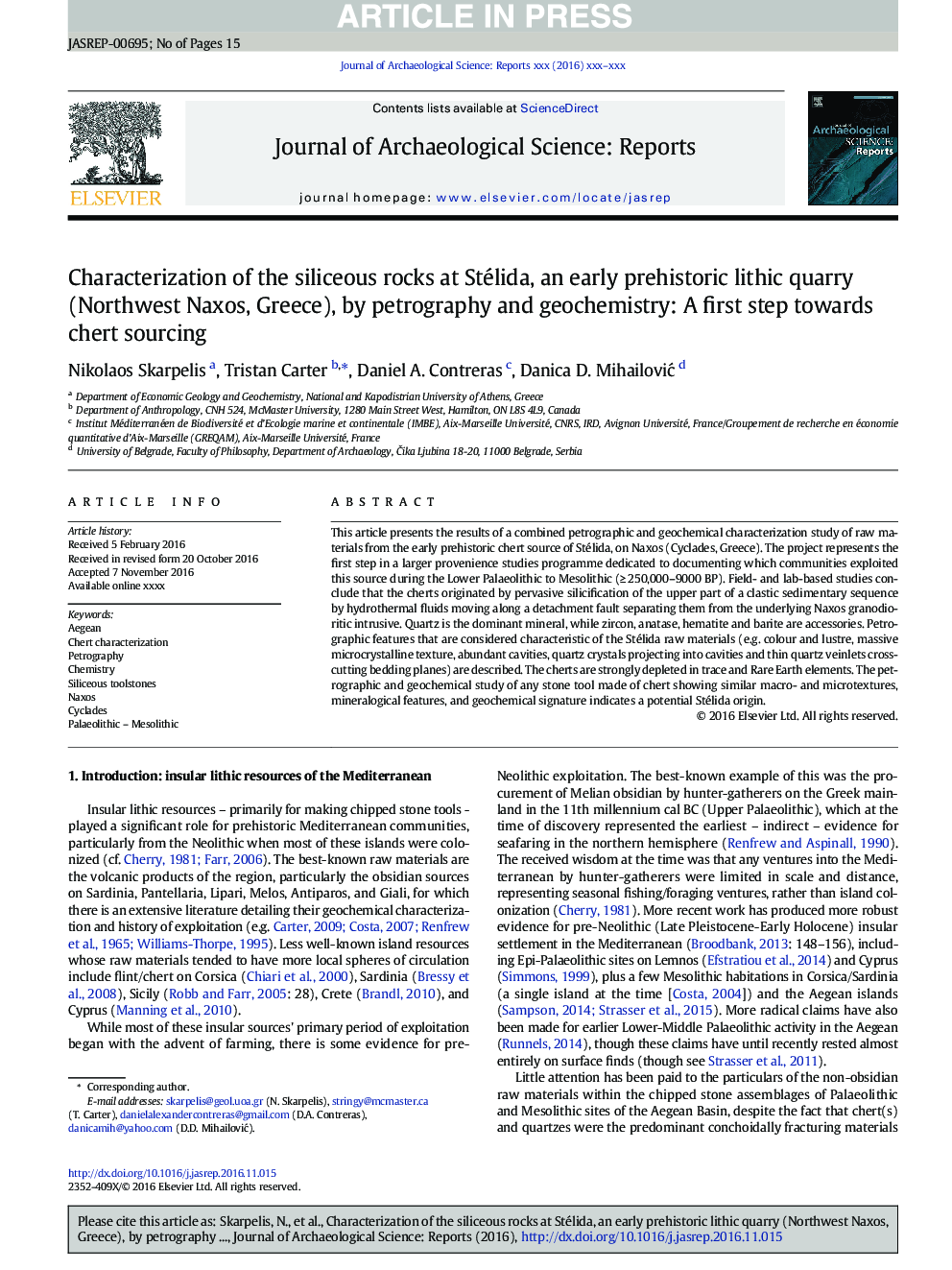| Article ID | Journal | Published Year | Pages | File Type |
|---|---|---|---|---|
| 5112468 | Journal of Archaeological Science: Reports | 2017 | 15 Pages |
Abstract
This article presents the results of a combined petrographic and geochemical characterization study of raw materials from the early prehistoric chert source of Stélida, on Naxos (Cyclades, Greece). The project represents the first step in a larger provenience studies programme dedicated to documenting which communities exploited this source during the Lower Palaeolithic to Mesolithic (â¥Â 250,000-9000 BP). Field- and lab-based studies conclude that the cherts originated by pervasive silicification of the upper part of a clastic sedimentary sequence by hydrothermal fluids moving along a detachment fault separating them from the underlying Naxos granodioritic intrusive. Quartz is the dominant mineral, while zircon, anatase, hematite and barite are accessories. Petrographic features that are considered characteristic of the Stélida raw materials (e.g. colour and lustre, massive microcrystalline texture, abundant cavities, quartz crystals projecting into cavities and thin quartz veinlets crosscutting bedding planes) are described. The cherts are strongly depleted in trace and Rare Earth elements. The petrographic and geochemical study of any stone tool made of chert showing similar macro- and microtextures, mineralogical features, and geochemical signature indicates a potential Stélida origin.
Related Topics
Social Sciences and Humanities
Arts and Humanities
History
Authors
Nikolaos Skarpelis, Tristan Carter, Daniel A. Contreras, Danica D. MihailoviÄ,
